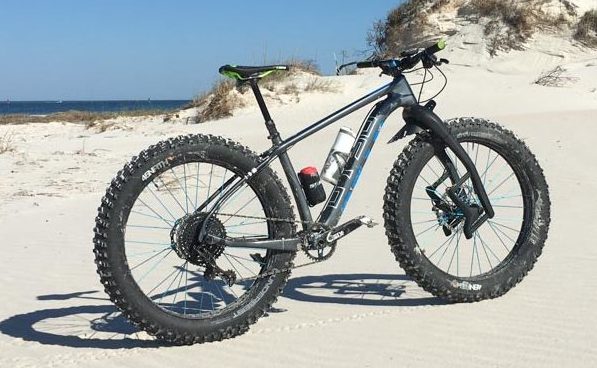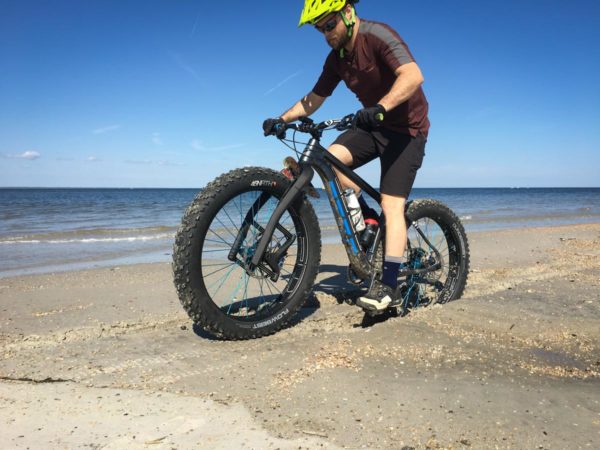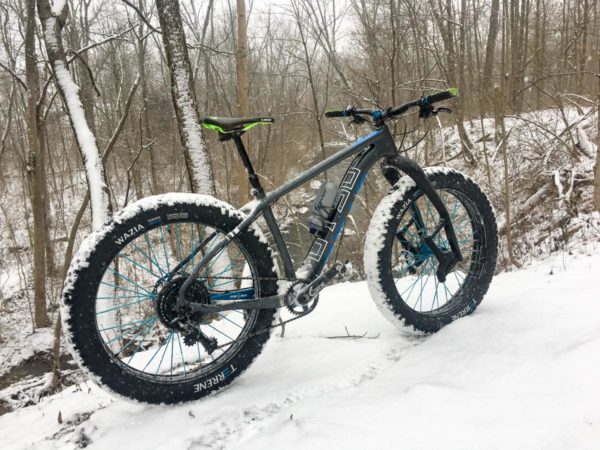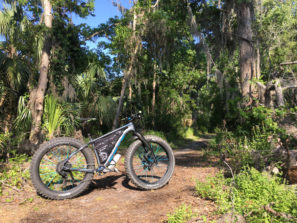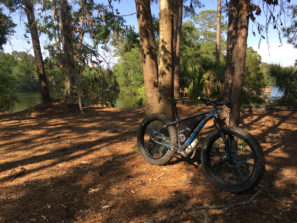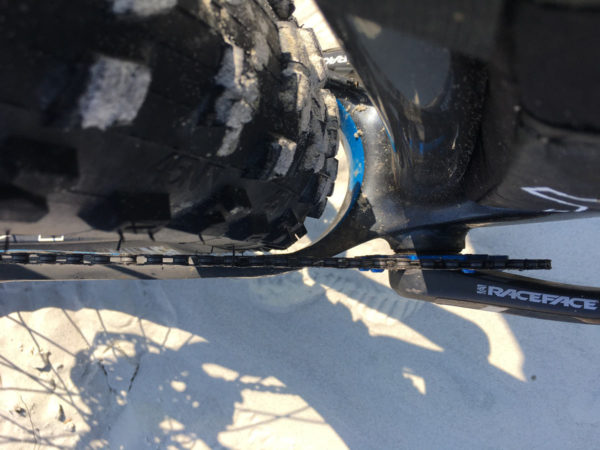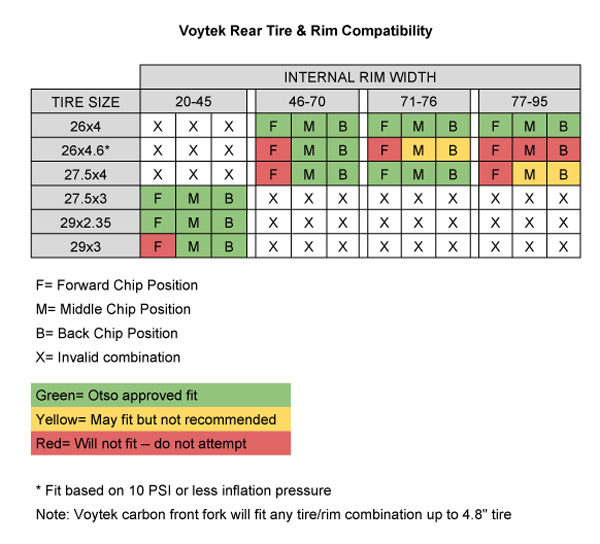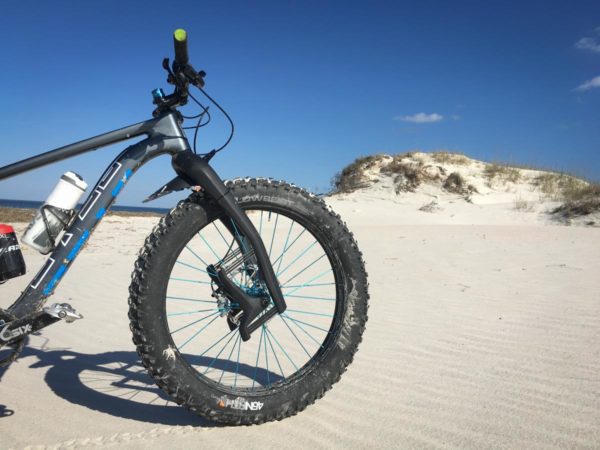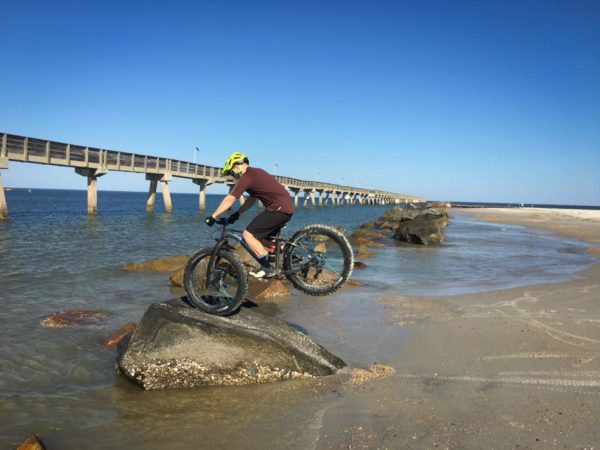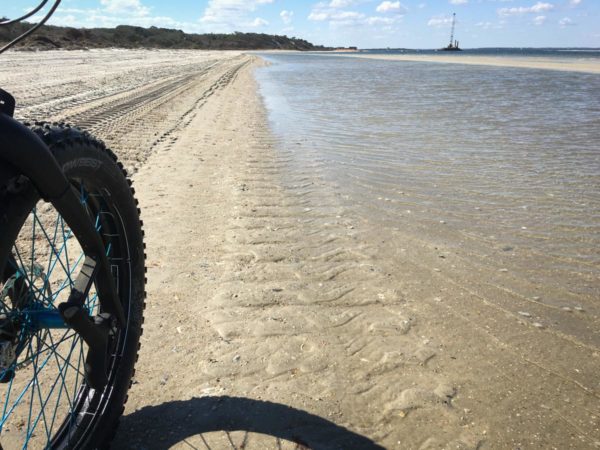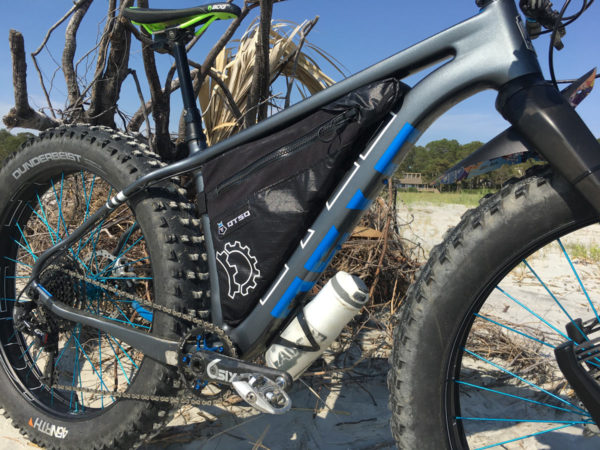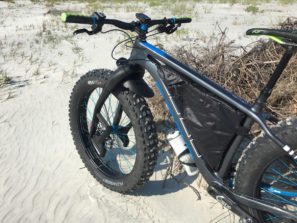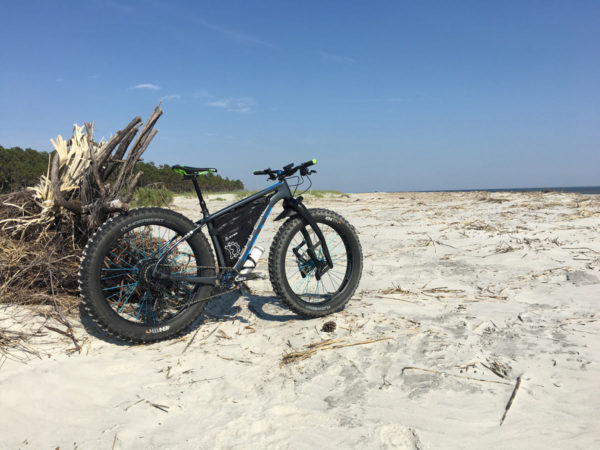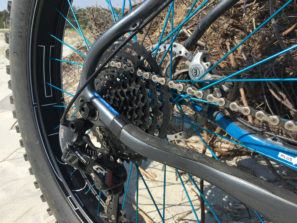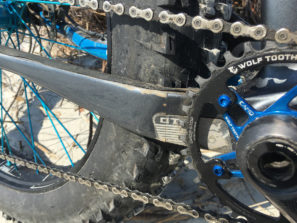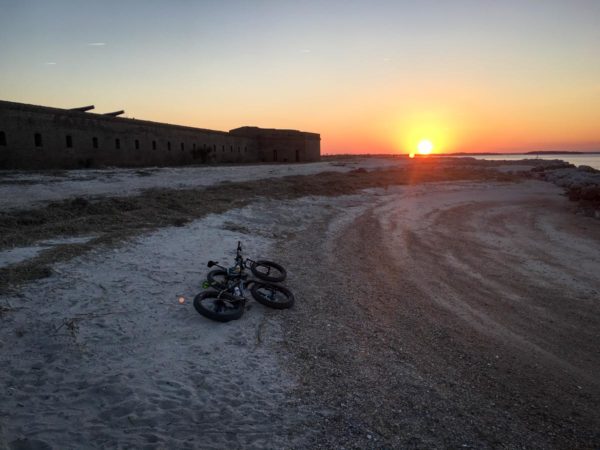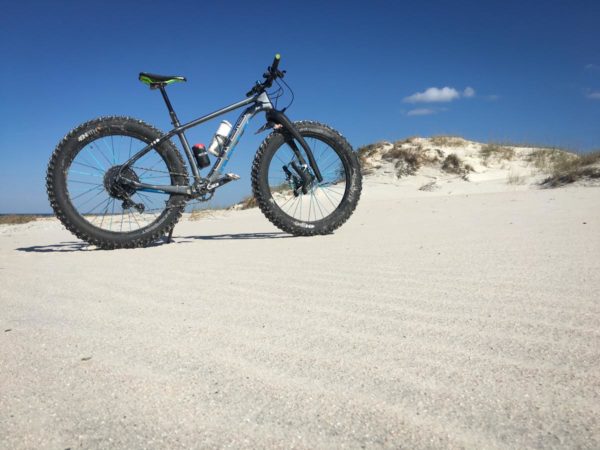A peculiar thing happened on a recent fat bike ride. Almost immediately after pedaling away from my house, something felt wrong. The cleat position on my shoes just felt… off. I had just installed cleats on new shoes, so I went back to the house and looked at the positioning. They looked like they were installed where I would normally have them, but I pushed them outboard anyways, in an attempt to bring my feet inward. After adjusting them, I took off again, only to feel like something was still amiss.
“Ok, it must be the shoes,” I thought to myself, as I pedaled back to the garage to swap them out for something I was familiar with. New (old) shoes on my feet, I set off for what should have been the final time. Something was still bugging me, and that’s when it hit me. After months of riding the Otso Voytek almost exclusively, this was the first time in quite a while that I threw a leg over my Borealis Echo.
It was clear what had happened. The Voytek’s narrow q-factor had ruined standard fat bikes for me. Months spent pedaling narrower cranks made standard fat bikes feel wrong, or mis-adjusted. With nearly a year of riding the Voytek under my belt, I’m not sure I want to go back to the wider q-factor ever again…

It was just over a year ago now that I was scrambling to put together a blacked out fat bike on my way down the beach. That would be my first experience with the Otso Voytek, and a rare chance – to review a bike from an advanced prototype stage through to the finished production.
I would be lying if I said I wasn’t excited to try the bike after having lengthy conversations about it with the Otso team. But that also leads to the possibility of being seriously disappointed after building something up in your head before having the chance to try it. Fortunately, that was definitely not the case here.

After a full year of riding it both as a fat bike and a plus bike, and in snow, sand, mud, dirt, on pavement, and everything in between, the biggest stand out is the Q-factor, but there’s a lot more to the story. Since the launch of the Voytek, other companies seem to have taken notice – or at least had similar thoughts (Rocky Mountain Suzy Q?). Reduce the Q-factor, but keep tire clearance as wide as possible. Not exactly an easy thing to do, which is probably why it took so long for someone to get it right.
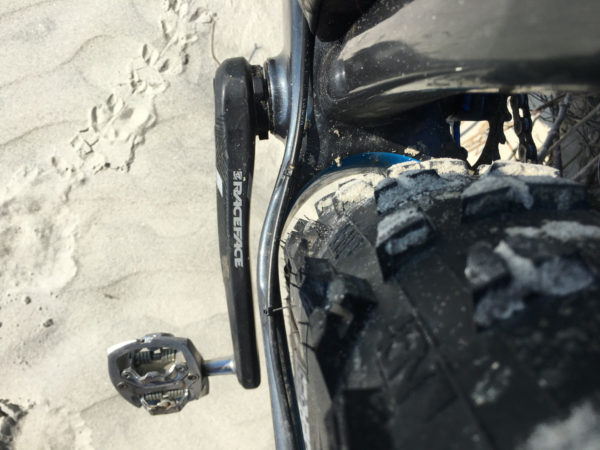
Tire size and rim size seem to be a constant debate and a source of change for fat biking, but Otso contends that most riders don’t need anything bigger than a 4.6″. And unless you’re trekking to the south pole, or doing some other extreme back country adventure, I’d tend to agree. I’ve always skewed towards larger, more aggressive tires for fat biking, but the Otso still fits my favorite combinations, even with the narrow Q-factor.
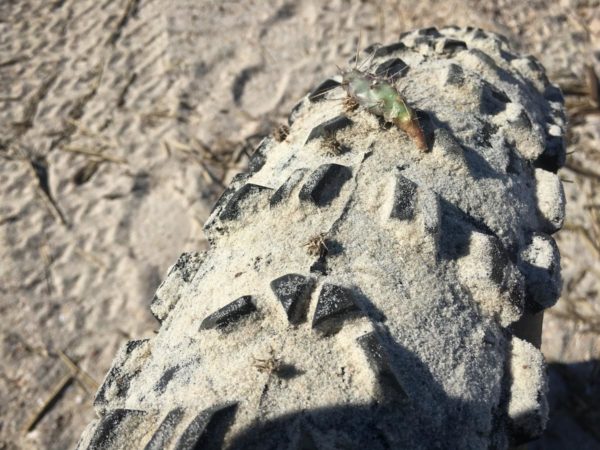
Technically, the 26 x 4.6″ Dunderbeist on a 76mm inner width HED BAD fat bike rim is considered a ‘yellow’ combination with the middle chip for the Voytek, which means Otso says it “may fit, but is not recommended.” I can say that I’ve used this very combination for the last few months in the middle dropout position with zero issues and no rubbing. It’s possible that larger or heavier riders may cause things to flex more than I do which could cause rubbing, which is probably why Otso considers it a yellow combination.

Up front, the stock rigid carbon fork has no problem swallowing the 4.6″ Flowbeist on the same BAD rim, but it also proved to be a little stiff for my liking. I know, I know, I can hear the comments now – “how can you tell a fork is too stiff with those giant tires underneath?” I’ve ridden a lot of fat bike forks, and I can assure you that this is one of the stiffest rigid forks I’ve tried. This probably is a good thing for riders considering the Voytek for fat bike racing on groomed snow trails, or for larger riders, but for general trail use and my weight (145lbs), I’d prefer something with a bit more give.
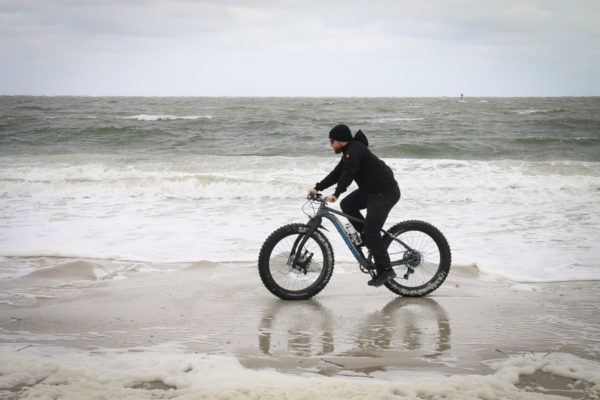
About the time of this realization, I came across the opportunity to review the Lauf Carbonara fat bike fork – which had me intrigued. Honestly, the first time I rode one was at a demo on the wrong size bike, and I came away thinking it was not very good at all. Eventually though, curiosity got the best of me and I wanted to try one for myself, on my own terrain, and my own bike. I’m glad I did.
In terms of fat bikes specifically, the fork has a lot to offer. Namely the ability to work in any temperature without issues, and the fact that no mater how much ocean water, road salt, or dirt and debris you can throw at it, it will always have the same performance without any maintenance. On a fat bike that regularly sees ocean water and gets blasted with the rust cannon known as Midwest winters on the back of a car, this is a very big plus. It also seems to gobble up small bumps (like the tracks from heavy equipment on the beach above) better than a traditional suspension fork like a Bluto, without feeling overly flexy. After testing the fork with another wheelset with steel spokes, the Industry Nine BigRig 760 Alloy wheels seem to have a profoundly positive effect on the performance of the fork, mostly due to how much stiffer they seem to be laterally. With the BigRigs installed, the fork just seemed more preceise in its handling – something to consider when building up a bike with the Lauf fork.
Would I replace every fat bike suspension fork with a Lauf? Definitely not. Forks like the Rock Shox Bluto and the Manitou Mastadon win easily when it comes to longer travel applications or just more aggressive riding in general. They also provide more adjustment, since the Carbonara only comes in two spring rates (I was on the softer spring). But in this case, I really enjoyed the Lauf as a way to take the edge off the front end of the Otso without adding much weight.
Otso also knocked it out of the park when it comes to their new frame bag that is a partnership with Revelate Designs. Thanks to the threaded bosses under the top tube and the water bottle bosses on the down tube and seat tube, the frame bag attaches with a single velcro strap (medium bike with custom fit bag). Each size frame has a corresponding frame bag with a few differences just to accommodate the difference in overall size. The end result is a super clean installation with plenty of room for your adventure essentials including a pocket on the left big enough for an iPhone 6s with a Lifeproof battery case. The main pocket is cavernous and has a large, easy to use zipper that holds way more than I needed for beach missions.
Really, the only thing I could fault the Voytek for in the long run is the fact that the chain stay protector is coming off after a year of abuse. A bit of electrical tape has ensured that the ends didn’t continue to peel off, but it’s also something Otso is aware of. Apparently, that material was sold to a number of frame builders as a durable frame protection option, and all of them experienced the same delimitation, so future bikes will have a different protector that should stay in place.
Most importantly though, the Voytek really shines when it comes to Q-factor and geometry. A lot of people have asked if the difference in Q-factor is really that noticeable, and after a year of riding it, the answer is an emphatic yes. I’ve gotten along with wider Q-factor fat bikes over the years with only mild discomfort, but once you get a taste of the narrower 183-188mm Q-factor the Otso provides (varies by crank), it’s very hard to go back – to the point that if you jump from the Otso to another fat bike, it feels like something is out of place, or flat out wrong. Combined with an aggressive geometry and the ability to run super short 430mm chain stays, the Voytek ends up riding better than almost every fat bike out there. If that wasn’t enough, there’s the fact that the narrower Q-Factor also makes for a much more enjoyable bike when it’s in a plus configuration, giving it drastically improved four season functionality over the competition.
It probably won’t take the competition long to catch up, but for me, the Otso Voytek is the future of fat bike design. And it’s already here.
For more details on the Otso Voytek, check out our previous posts with geometry, the full build up (including actual weights), and the short term review which focused more on the plus configuration.
